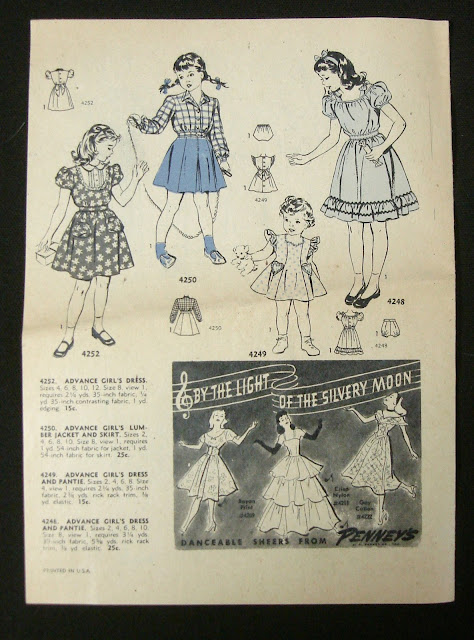While pattern catalogues are becoming scarce and pricy, other publications can be a source of information to assist in dating fashion. A wonderful resource is sketch or art instruction books, and I'm pleased to share with you "Practical Fashion Sketches" by Charlotte H. Young.
While the book has a 1943 copyright, I suspect it was published toward the end of or just after World War II due to the amount of fabric and buttons used, and the opulence of designs. Or it may have been fashion sketches of designs that had not yet been put into production because of the war. Either way, it is a delightful look at fashion of the Forties!
Lingerie
The offerings of this section include undergarments, pajamas and gowns, housecoats and spots.

"Spots add the sparkle and humor to ads that appeal to the public. Advertising agencies can always use clever and amusing spots."
Many, many years before Adobe Illustrator and Photoshop, print ads were hand-drawn. "Spots" were the pen and ink equivalents of posed or action photographs.
Fashion by the Clock
In proper 1940's society, fashion expectations were dictated by the hands of the clock, thus sections for Daytime and Evening. Further division was prompted by activity. Daytime had social, business and recreational styles. Evening had informal and formal styles.
Daytime
Daytime presented itself as Dressy, Tailored or Sports. Dressy is what would be called a "tea dress" today, and was worn for lunches, teas and afternoon social gatherings. Tailored attire was worn for work, bank business or shopping. Sports (activewear) was defined by season.
Daytime Dressy

Daytime Dressy
Daytime Spots




































